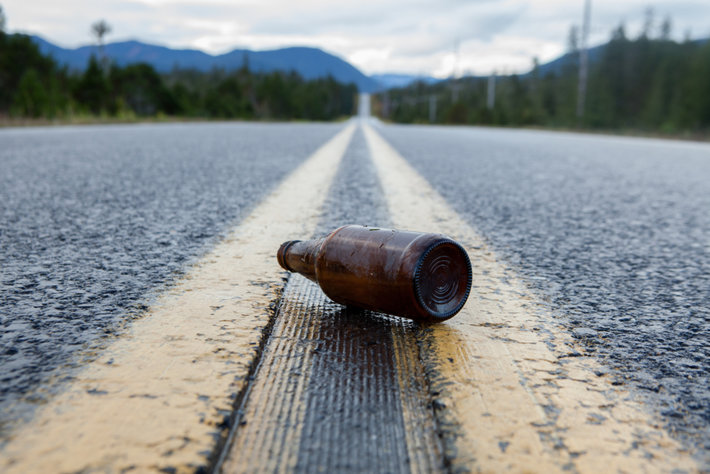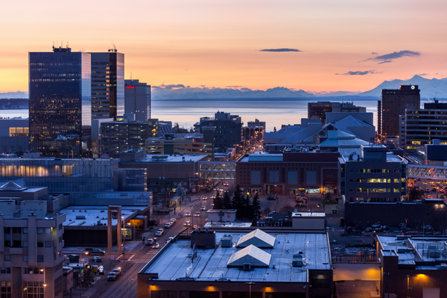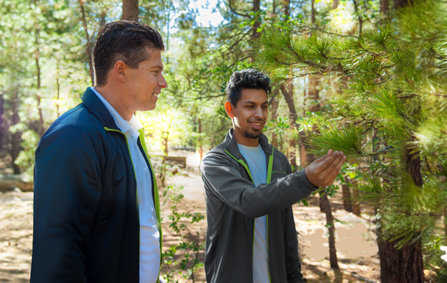Alcohol Abuse in Alaska, America's Last Frontier

Few would question the fact that alcohol misuse is harmful. No matter who engages in heavy drinking, doing so is going to create harm both physically and mentally. And while such harm might manifest in different ways with different people, excessive drinking of any kind will come at a cost.
Anyone can fall prey to alcohol addiction. But there are some demographics within certain states where alcohol abuse is far more common (and far more damaging as a result).
Case in point, when we look to the wilds of Alaska, we find one of the worst alcohol problems in the country. It’s a vicious dichotomy, that alcohol addiction would be so prevalent in a land so beautiful. But among the Alaska Native American tribes, alcohol addiction is out of control. And though Alaska is known for its incredible sights and natural lands, the unforgiving terrain and climate do not make it an easy place to live. Why are so many indigenous peoples falling prey to alcohol addiction in a place where survival is already a challenge?
A Serious Problem in Alaska

In Alaska, alcohol is the common denominator in violent crimes, jail sentences, and preventable deaths among Alaska Eskimos, Aleuts, and Indians. In Alaska, the suicide rate among young native males is 14 times higher than the national average. Fetal alcohol syndrome is twice the national average. Accidental deaths are three times higher than the national average.
Alaskan Native Americans are dying from alcohol addiction at a horrible rate. About 12 percent of indigenous deaths are from alcohol-related causes. That’s almost three times the worldwide tally of 5 percent of annual global deaths occurring from alcohol.
The leading causes of alcohol-related deaths among Native tribes are traffic accidents, liver disease, homicide, suicide, injuries, and falls. Most of the Natives who die from alcohol are younger than 50, and most of them are men. In fact, seven percent of them are younger than 20 years old.
Factors Which Precipitate Alcohol Addiction and Possible Solutions to Them
Natives are not alone in their struggle. Some programs seek to help them. The Alaska Federation of Natives launched a sobriety movement, which is a grassroots campaign that aims to promote a form of sobriety that emphasizes traditional, indigenous values and lifestyles. The movement seeks to empower Native communities, to make sure that the indigenous peoples of the Last Frontier are getting the help that they need.
Some Alaska tribes are taking a hard-line stance on alcohol sales and possession. In 63 out of 200 Native communities in the state, the sale of alcohol is forbidden. And in 17 villages, even the possession of alcohol is illegal.
It’s heartening to see the indigenous peoples of Alaska work hard to overcome their crisis. However, the alcohol epidemic among such tribes will not be easily resolved, especially not without outside help. For example, one of the factors which precipitate alcohol abuse is unemployment. This is not to say that all unemployed people will become alcohol addicts. But being deprived of a job and not being able to make ends meet leads to despair. And despair can lead to drinking to cope with that despair.
The unemployment rate for non-indigenous peoples living in Alaska is eight percent. Compare that to the unemployment rate for indigenous Alaskans, which is more than 20 percent. The state of Alaska (or private businesses) could innovate and implement effective work programs for Native communities. State and private institutions could work with indigenous tribes and villages to create employment opportunities.
Given that many Native tribes are often located in harsh, almost uncharted rural regions of Alaska, their access to healthcare is often quite poor. When people cannot gain access to better healthcare options, their quality of living and life expectancy drop considerably. And when chronic illnesses set in, with no foreseeable end to such diseases, individuals will sometimes turn to alcohol as a coping method.
In spite of a legal obligation on the part of the U.S. to provide healthcare to indigenous Alaskans, healthcare for such individuals lags far behind the national average. Their life expectancy is 4.4 years less than the national average, and their infant mortality rate is higher than the state average.
If Alaska's Native tribes had better access to healthcare services, they would lead healthier lives. They’d be less likely to fall prey to alcohol misuse.
Another critical problem among indigenous peoples is their lack of access to effective addiction treatment. Natives must have access to professional and standard drug and alcohol rehab centers. The tribes and villages are working to create their own treatment programs for alcohol addiction, but this is not solving the problem fast enough.
About 14 percent of Native Americans in Alaska need addiction treatment. Only about 12 percent of those who need treatment get it. And on top of that, relapse rates are also a factor, due to ineffective treatment programs, return to old habits and environments, ongoing severe living conditions, etc.
A Note on Alcohol Rehab
Alcohol addiction is a serious affliction, something one cannot overcome on their own. That’s why it is so crucial to make alcohol rehab available to those who need it.
The safest, most effective alcohol treatment programs are those which offer residential services that run for longer than 30 days. Such programs give recovering addicts the chance to overcome the underlying crises and struggles that led them to excessive drinking in the first place.

The Narconon program has successfully helped thousands of people across the U.S. and the world overcome alcohol addiction. Narconon offers a unique program that addresses both the physical and mental aspects of addiction. The program seeks to help recovering addicts overcome their underlying compulsions to use alcohol while also assisting them in fostering new abilities and skills.
Narconon tackles alcohol addiction from multiple angles because that’s what is needed to help someone go through life and face its many challenges, and to do so without the compulsion to drink. Narconon does more than free individuals from their past struggles. Narconon also teaches them how to tackle life as a free, sober, and capable individual.
As we’ve seen from the above discussion on alcohol addiction in Alaska, there is no doubt that alcohol abuse is a life or death matter. And when we zoom the lens out a bit and look at the entire country, we see that every state and every city has people who suffer from this critical problem. Unfortunately, not everyone makes it. About 88,000 people die from alcohol-related causes every year in the U.S.
Don’t let your son, daughter, grandchild, spouse, sibling, or parent become a statistic. Please make sure they get help today.
Sources:
- https://www.upi.com/Archives/1989/10/20/Alaskan-natives-start-sobriety-movement/1259624859200/
- http://www.nbcnews.com/id/26439767/ns/health-addictions/t/native-american-deaths-alcohol-related/#.XjY_fWRKjow
- https://www.who.int/news-room/fact-sheets/detail/alcohol
- https://www.nativefederation.org/
- https://www.cbpp.org/blog/alaskas-high-unemployment-would-compound-harm-from-a-medicaid-work-requirement
- https://www.americanbar.org/groups/crsj/publications/human_rights_magazine_home/the-state-of-healthcare-in-the-united-states/native-american-crisis-in-health-equity/
- http://ibis.dhss.alaska.gov/indicator/complete_profile/InfMort.html
- amhsa.gov/data/sites/default/files/NSDUH120/NSDUH120/SR120-treatment-need-AIAN.htm
- https://www.niaaa.nih.gov/publications/brochures-and-fact-sheets/alcohol-facts-and-statistics


 ®
®